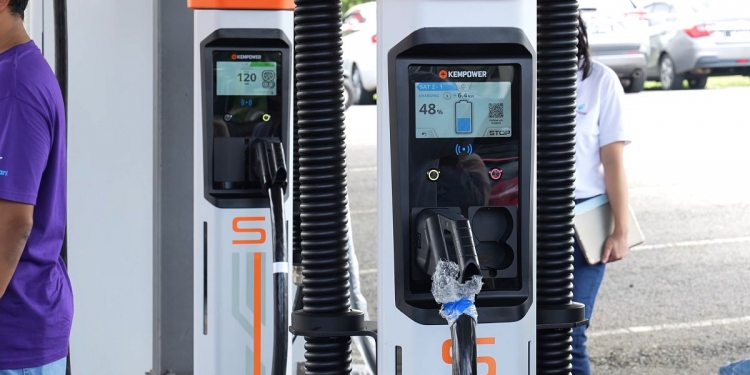During the launch of Southeast Asia’s first 350kW EV charger, Gentari had given us a preview of their new Kempower EV chargers at Bangi Golf Resort. Unlike most DC chargers, the Kempower EV charging solution boasts dynamic power distribution and this is probably the smartest EV charging system in Malaysia right now.
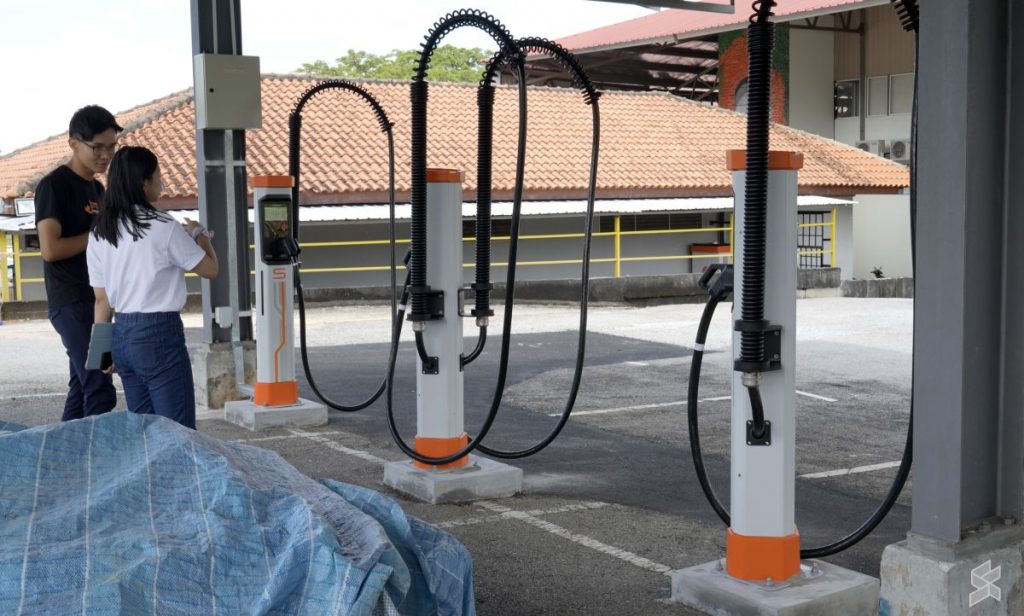
Gentari has installed three Kempower Satellites at their Bangi Golf Resort EV charging hub which has a total of four nozzles. These chargers are significantly slimmer than your usual bulky DC chargers as it draws power from a 200kW Kempower Power Unit that’s placed further away from the charging bays.
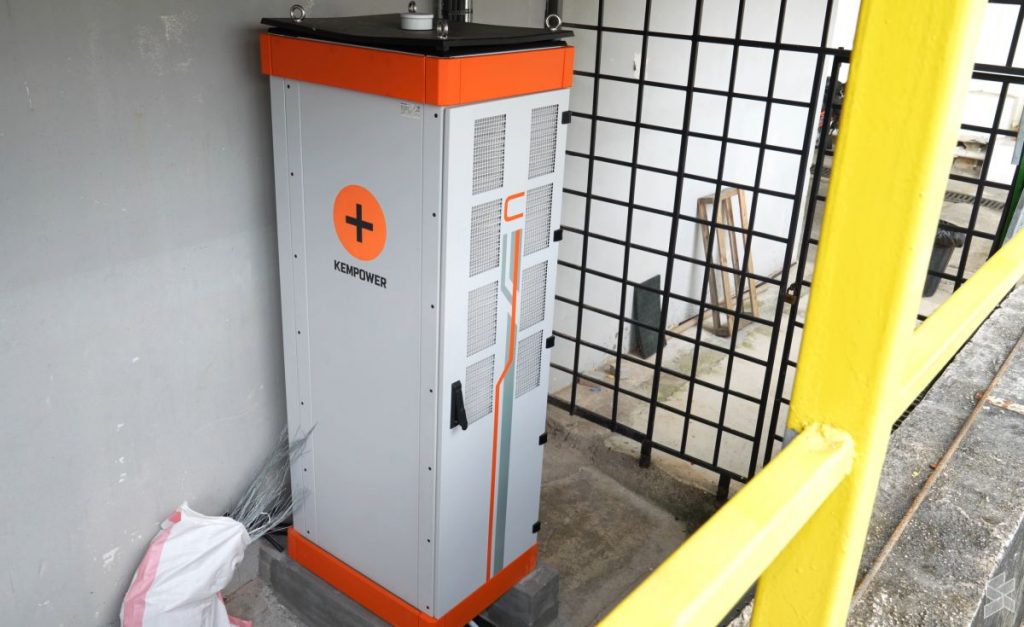
This is the first Kempower charging solution in Malaysia and we are told that it is probably one of the first in the region.
Slimmer EV DC chargers and lighter cable management
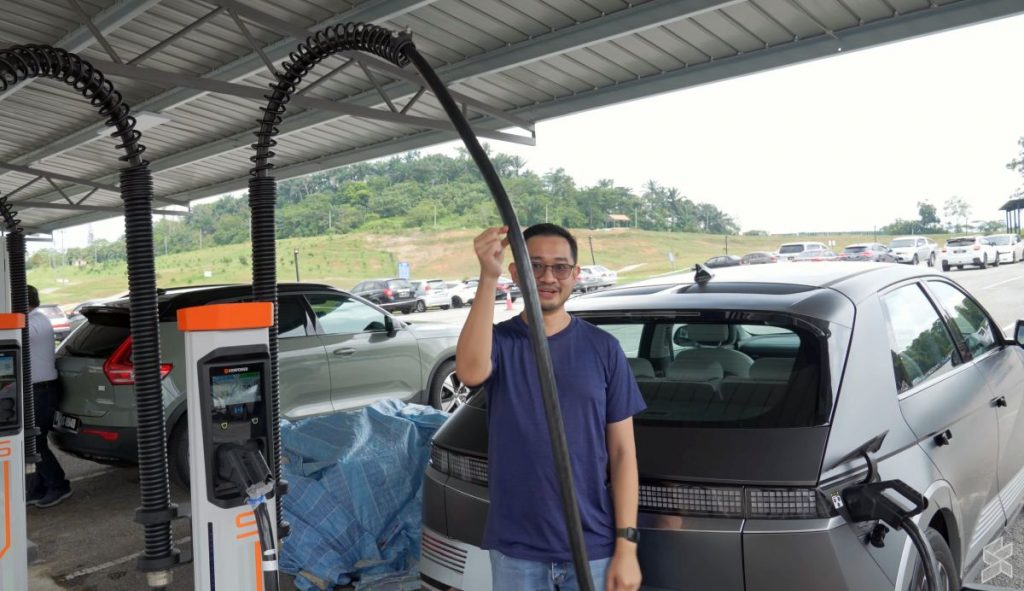
Besides the slim design which makes it possible to install in tight spaces, the attached CCS DC charging cables come with a spring mechanism which makes it easier to move and extend the cable to reach your EV’s charging port. This is a huge convenience as DC charging cables are thick and heavy which can be tedious to handle.
Depending on market requirements, these satellites are also modular and operators can choose to include Type 2 (AC), CSS (DC) or Chademo outlets.
Dynamic Power Sharing
The biggest highlight for the Kempower charger is its dynamic power sharing capabilities. It kinda works like your multi-port GaN charger to charge your laptop, tablet and smartphones simultaneously. In this Bangi Golf Resort setup, the single power unit configuration has a total output of 200kW which can be shared among four vehicles. For example, if there are three EVs plugged in, the first vehicle can get 120kW, while the second vehicle gets 60kW and the last vehicle gets 20kW. You can see how it works in the video below:
When it comes to EVs, the DC charging rate is not consistent from 0-100%. Typically, the EV charging rate is the fastest around the first 50% and the charging demand starts to dip significantly once it reaches a higher state of charge. To ensure efficient use of charging capacity, the Kempower chargers can intelligently allocate the released charging capacity to other vehicles at the charging hub.
For EV charger operators, this solution encourages capacity efficiency, while EV users who need to top up quickly, won’t have to queue for a specific DC charger. They can just plug in to any available Kempower satellite and be assured that their EVs will be able to get the maximum available capacity once the earlier cars have reached a higher state of charge.
The Kempower Dynamic power solution is also scalable as operators can add up to a total of 3 cabinets to provide up to 600kW of total output. To support more vehicles, they can add up to a total of 8 satellites with single charging outlet or 4 satellites with dual charging outlets. Essentially, it is almost like having a petrol station setup but for EV charging.
User friendly displays with charging curve information
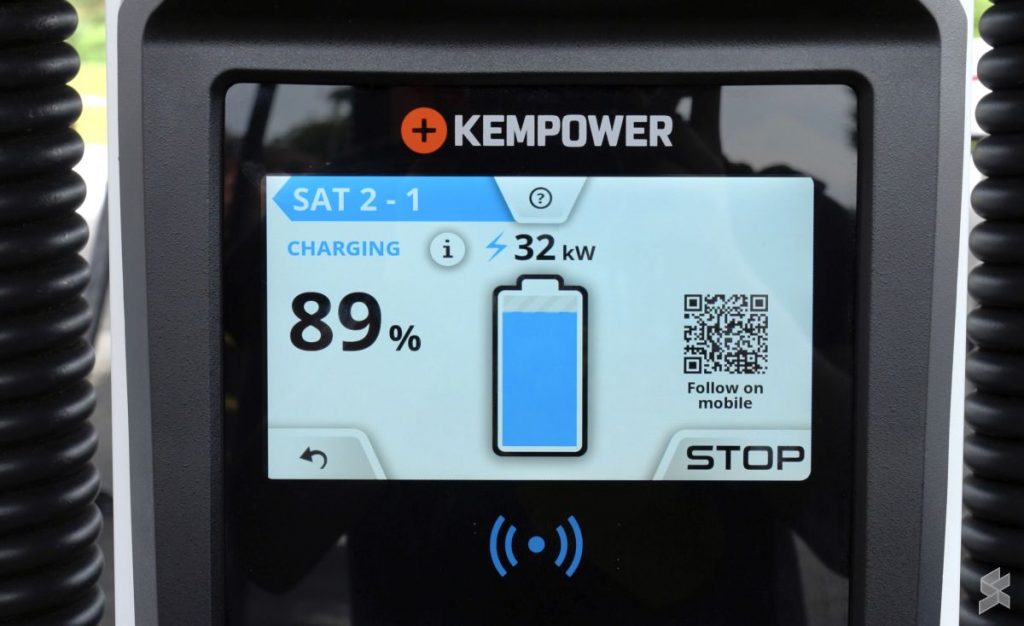
Another interesting feature with the Kempower chargers is its touch screen displays. Besides showing your current charging rate and charging levels, it also provides a detailed charging curve as well. Even before you start charging, the screen will also display the available charging capacity that you can utilise. On top of that, there’s even a QR code which you can scan with your phone to view the charging status from a web browser. This is great for monitoring your charging progress especially when you’re going for a quick bite or a toilet break.
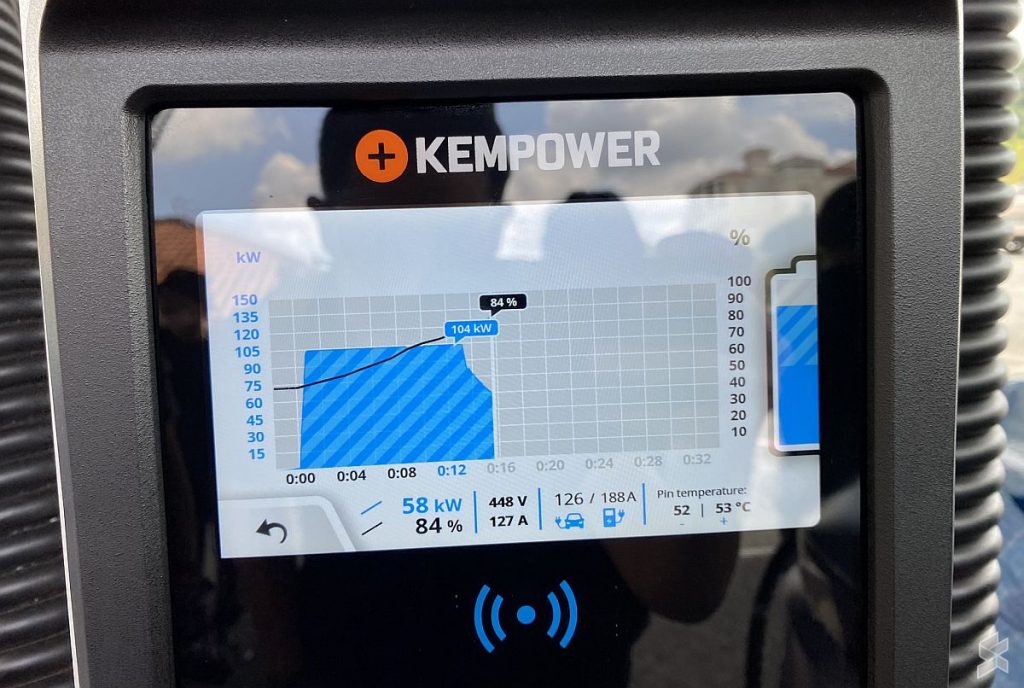
Because of the dynamic EV charging rate based on vehicle demand, this charging system would only make sense with the kWh-based pricing. This charging hub at Bangi is in fact the second site in Malaysia to receive the Energy Commission’s EVCS licence, which enables them to charge based on kWh utilised instead of parking time.
Most DC chargers on Malaysian highway R&Rs are typically dedicated units with fixed capacity such as 180kW or 90kW and they charges an exorbitant rate of RM3 or RM4 per minute. This can be a very costly affair for EVs that have a lower maximum DC charging rate (e.g. 50kW to 80kW). Not only it takes them longer to get sufficient charge, the limited number of charging outlets can cause long queues during the festive season.
EV chargers with Dynamic Power sharing is perfect for highway R&R
With this dynamic power sharing solution, operators can have more charging outlets which makes it more efficient to juice up more EVs simultaneously. As Malaysia gears up for more EVs to hit the road, we need a robust charging network across interstate highways and roads so that more EVs can juice up quickly in a time and cost effective manner. At the moment, Gentari is still testing the Kempower chargers at Bangi Golf Resort and we hope to see more of these chargers being implemented at major highway R&Rs and petrol stations throughout the country.
With kWh-based pricing, the cost of fast charging an EV could be cheaper or at least on-par with paying petrol for an internal combustion car. At the moment, Gentari’s EV charging hub at X Park Sunway Serene costs RM1.20 per kWh for the 350kW charger and RM1.00 per kWh for the 180kW charger.
Based on the RM1.00 per kWh rate, a 0-100% charge (estimated 83.7kWh) for a Kia EV6 using a 180kW DC charger would have cost around RM84, which is like paying for 40 litres of RON95 petrol. That’s enough to provide an estimated 500km of driving range to the EV6.
Related reading
- Gentari 350kW DC fast charger at X Park Sunway Serene now charges at full power
- EV DC fast charging in Malaysia: kWh vs time-based charging, which is cheaper?
- Gentari offers free EV charging up to 350kW at X Park Sunway Serene for a limited time
- Gentari launches Southeast Asia’s first 350kW EV charger, pay by kWh instead of time

